Nigerian National Museum
The Nigerian National Museum is a national museum of Nigeria, located in the city of Lagos. The museum has a notable collection of Nigerian art, including pieces of statuary and carvings and archaeological and ethnographic exhibits.[1] Of note is a terra-cotta human head known as the Jemaa Head (c. 900 to 200 BC), part of the Nok culture. The piece is named after Jema'a, the village where it was uncovered.[2] It is located at Onikan, Lagos Island.
.jpg.webp) View of the museum's exterior | |
| Established | 1957 |
|---|---|
| Location | Onikan, Lagos Island, city of Lagos |
| Collections | Nigerian art, including pieces of statuary and carvings and archaeological and ethnographic exhibits |
| Founder | Kenneth Murray |
History
The museum was founded in 1957 by the English archaeologist Kenneth Murray.[3][4]
Gallery
.jpg.webp) Benin mask; ivory
Benin mask; ivory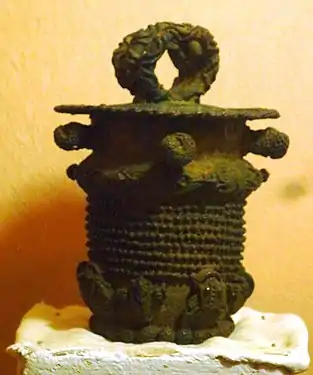 Bronze ceremonial pot; 9th century; from Igbo-Ukwu
Bronze ceremonial pot; 9th century; from Igbo-Ukwu Bronze ceremonial vessel in form of a snail shell; 9th century; from Igbo-Ukwu
Bronze ceremonial vessel in form of a snail shell; 9th century; from Igbo-Ukwu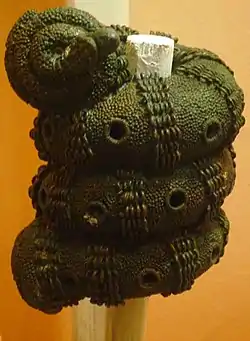 Bronze ornamental staff head; 9th century; from Igbo-Ukwu
Bronze ornamental staff head; 9th century; from Igbo-Ukwu Bronze pot; 9th century; from Igbo-Ukwu
Bronze pot; 9th century; from Igbo-Ukwu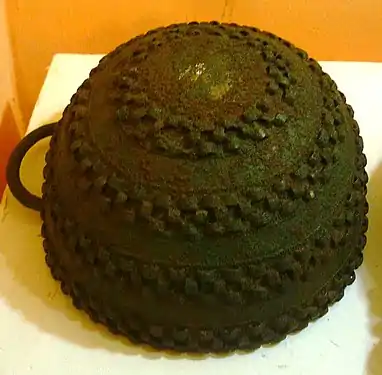 Bronze pot; 9th century; from Igbo-Ukwu
Bronze pot; 9th century; from Igbo-Ukwu Cresentric bowl; bronze; 9th century; from Igbo-Ukwu
Cresentric bowl; bronze; 9th century; from Igbo-Ukwu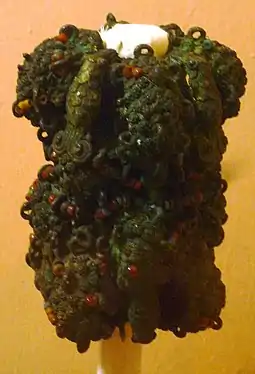 Bronze intricate ornamental staff head; 9th century; from Igbo-Ukwu
Bronze intricate ornamental staff head; 9th century; from Igbo-Ukwu Intricate bronze ceremonial pot; 9th century; from Igbo-Ukwu
Intricate bronze ceremonial pot; 9th century; from Igbo-Ukwu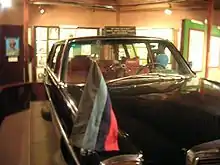 the car in which Murtala Mohammed was assassinated
the car in which Murtala Mohammed was assassinated
See also
References
- Nations Encyclopedia
- Atwood, Roger. "The Nok of Nigeria". Archaeology. Archaeological Institute of America. Retrieved 29 February 2016.
- Adio, Segun (12 February 2011). "History on display at the National Museum". National Mirror. Retrieved 30 May 2011.
- Robson, Emily (April 2010). "Featured Artist: Benedict (Ben) Chukwukadibia Enwonwu". University of Chichester. Retrieved 30 May 2011.
This article is issued from Wikipedia. The text is licensed under Creative Commons - Attribution - Sharealike. Additional terms may apply for the media files.